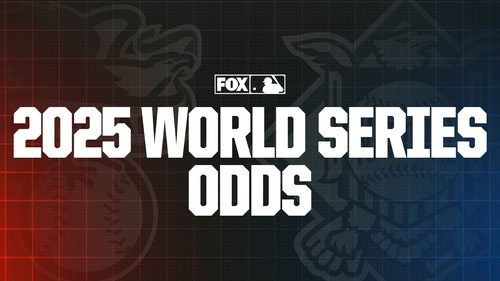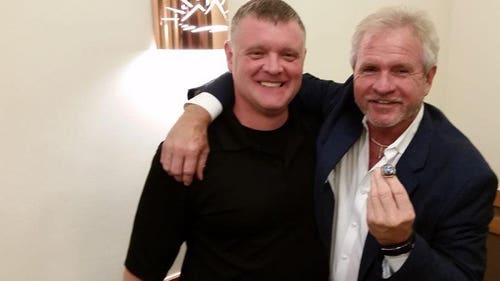
Three reasons why Cubs' Shōta Imanaga might be biggest steal from free agency
Perhaps some of our attention was misplaced this winter.
While Shohei Ohtani's free agency warped into plane-tracking madness, and Yoshinobu Yamamoto received a visit in Japan from Mets owner Steve Cohen, there was 30-year-old Shōta Imanaga, who was Nippon Professional Baseball's 2023 league leader in strikeouts, quietly awaiting his own Major League Baseball deal.
Ohtani and Yamamoto stole all the publicity on the way to mega deals with the Los Angeles Dodgers. Once those contracts, lucrative beyond imagination, were finalized in December, the attention turned to Imanaga. Soon, the Chicago Cubs swooped in and signed him to a four-year deal worth just $53 million.
An older rookie, scouts were concerned with how Imanaga would adjust to the less-tacky MLB baseball, and had him slotted as a back-end starter rather than a frontline ace. One month into his MLB career, the southpaw looks much more like the latter. Imanaga did not allow an earned run in his first 18.1 innings and has registered a 0.84 ERA, 0.75 WHIP and 22 strikeouts through his first four starts (21.1 innings). He's not only stepping up for the Cubs rotation in Justin Steele's absence, he's making sure we're taking notice.
Imanaga was a bit of an afterthought this past winter. Now, he might just be the biggest steal in free agency. Let's explore the three biggest reasons why Imanaga's contract could be a major coup for the Cubs.
1. He's bound to the Cubs for more than one year — but not too many years
Besides Yamamoto's 12-year, $325 million contract with the Dodgers, other top free-agent pitchers struggled to land the long-term deals they wanted. Blake Snell, the National League reigning Cy Young winner, wound up signing with the Giants on a two-year, $62 million deal following a free agency that trickled into spring training. But Snell's contract allows him to opt out immediately after the 2024 season and test the market again. And since Snell rejected a qualifying offer from the Padres, the Giants will lose their third-round draft pick this year, as well as $500,000 of their international bonus pool money.
It's the same story with left-hander Jordan Montgomery, another highly sought-after starter in free agency this past winter, who was coming off a dominant postseason performance before struggling to land the nine-figure deal he expected. In the final days of March, Montgomery wound up signing with the Arizona Diamondbacks on a one-year, $25 million pact with vesting options for 2025 that range from $20-25 million. Like Snell, Montgomery could also opt out of the deal and test the market again if he starts 10 games this year.
If Snell and Montgomery pitch well this year, they're expected to opt out of their respective deals and the Giants and Diamondbacks will have only reaped the rewards of one year. If they falter — and Snell is off to an especially concerning start in the Bay — then they're expensive busts. So, it's a bit of a double-edged sword for San Francisco and Arizona. Compared to those risky and pricey arrangements, the Cubs are promised a bit more with Imanaga.
Imanaga's contract guarantees $53 million over four seasons ($13.25 million average annual value). But the inexpensive pact also allows the left-hander and the club to spend more years together. After the 2025 and ‘26 seasons, Chicago will have the option to extend the deal to five years ($80 million total). If the deal is not extended in either offseason, Imanaga will have the option to elect free agency, at which point he will be 32 or 33 years old.
This was a shrewd deal by Cubs president of baseball operations Jed Hoyer that is so far pleasantly working out in the team's favor. Imanaga's contract terms were surprising even before he threw a single MLB pitch, because, one year prior, right-hander Kodai Senga signed a five-year, $75 million deal with the Mets that also looked like a steal after he put together a dominant rookie season. Like Imanaga, Senga was a 30-year-old MLB rookie and thus was widely expected to command a similar, if not more lucrative, deal. But his market, as it was for effectually every pitcher other than Yamamoto, was cooler than anticipated. Credit to the Cubs for getting Imanaga to compromise and reaching an agreement that could span the rest of his prime.
2. The adjustment period is sometimes longer for the league than the pitcher
Speaking of Senga, Imanaga is benefitting from being new in the league the same way that the Mets rookie did last year. Senga's patented "ghost fork" routinely flummoxed opposing hitters, in part because of its filth, but also because batters had simply never seen that pitch before. By the end of September, Senga became the first Mets rookie to record 200 strikeouts in a season since Dwight Gooden in 1984.
It's common for pitchers from NPB to excel in the U.S., particularly at the outset of their major-league careers. Take Shohei Ohtani as an example.
In his final NPB season, Ohtani went 3-2 and posted a 3.42 ERA with 31 strikeouts, 20 walks, and 1.29 WHIP across 11 games (five starts). In his first MLB season, Ohtani went 4-2 and posted a 3.31 ERA with 63 strikeouts, 22 walks, and 1.16 WHIP across 10 starts. He was able to replicate near-identical results in his first MLB season (all while hitting 22 home runs and battling injuries throughout the year).
Right-hander Masato Yoshii was 33 years old when he made his MLB debut for the Mets in 1998, and his rookie season wound up being his best in the majors, proving age doesn't matter when the arsenal is that unfamiliar. Kenta Maeda also had a strong debut season in MLB, finishing third in Rookie of the Year voting after going 16-11 and making 32 starts for the Dodgers in 2016. Yu Darvish was an All-Star and finished ninth in Cy Young award voting in his 2012 rookie season for the Rangers. Masahiro Tanaka was worth every penny of the seven-year, $155 million contract he signed with the Yankees, pitching at least six innings in each of his first 18 outings and recording a quality start in the first 16.
So far, Imanaga appears primed for similar success.
3. Imanaga is keeping the bases clean
The southpaw not only leads MLB with a .195 opponent on-base percentage, but he's one of only two starters (minimum 20 innings pitched) to hold opponents to an on-base percentage under .200. Who's the other guy? None other than Padres right-hander Dylan Cease, whose 0.74 WHIP ranks second in baseball and just ahead of Imanaga's. And on the seldom occasions opponents do manage to get on base versus Imanaga, ensuing hitters have just two hits with runners in scoring position against him this season in nine chances (.222 average).
Imanaga's early-season control primarily comes down to his four-seam fastball, one of the filthiest pitches in baseball right now. Opposing batters are hitting just .115 off Imanaga's four-seamer, which is the second-lowest mark for any pitch with a minimum of 50 plate appearances. Imanaga's fastball has a run value of eight, and if you're wondering just how elite that statistic is, only Corbin Burnes' cutter has been a better pitch, with a run value of nine. And even then, Imanaga is getting more swings and misses on his four-seam fastball than Burnes on his unhittable backdoor cutter.
Free passes aren't an option with Imanaga, either. He's tied with Zach Eflin for the fewest number of walks issued (two) for starters with a minimum of 20 innings pitched. Imanaga's 10.5 strikeout-to-walk ratio is best among NL starters and third-best in MLB.
The Cubs are 14-9, right at the top of the NL Central with the Brewers, and playing well so far despite losing Steele and Jameson Taillon to March injuries. Imanaga, undaunted by the newfound pressure, has been a major boon to the Cubs rotation, pitching even better than most expected him to. While he started his MLB career in the shadows of other pitchers, he's quickly proving that he deserved a bigger spotlight all along.
Deesha Thosar is an MLB writer for FOX Sports. She previously covered the Mets as a beat reporter for the New York Daily News. The daughter of Indian immigrants, Deesha grew up on Long Island and now lives in Queens. Follow her on Twitter at @DeeshaThosar.
[Want great stories delivered right to your inbox? Create or log in to your FOX Sports account, follow leagues, teams and players to receive a personalized newsletter daily.]










